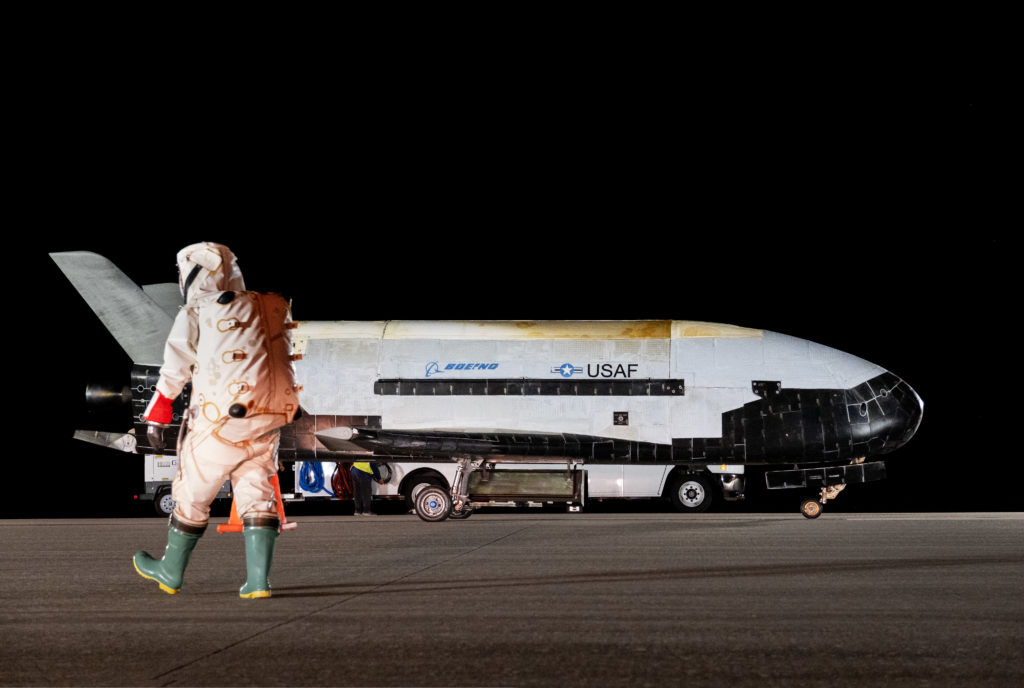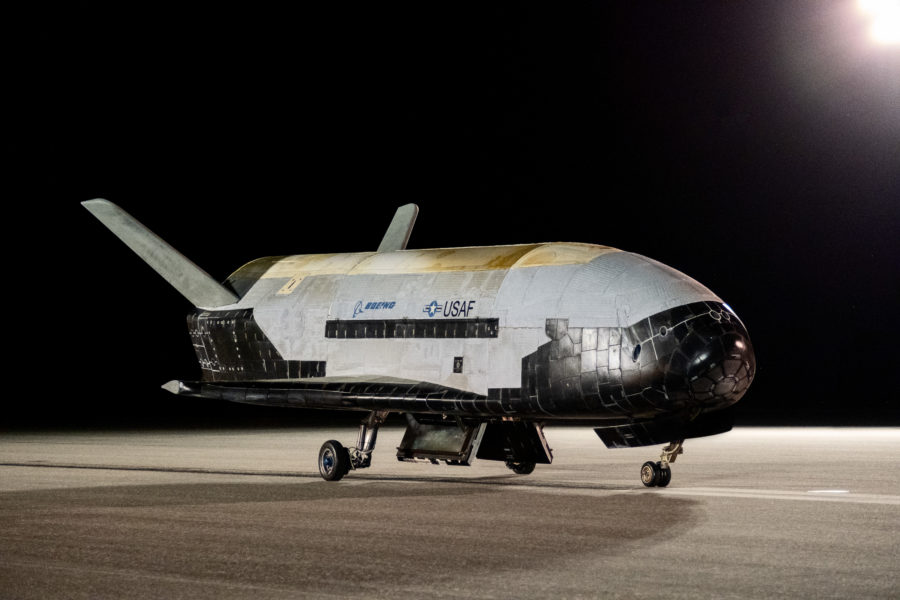The Space Force’s X-37B space plane returned to Earth on Nov. 12, concluding its longest mission yet after nearly two and a half years in orbit.
The orbital test vehicle touched down at NASA’s Kennedy Space Center Shuttle Landing Facility early the morning of Nov. 12, the Space Force announced in a release. The vehicle launched from Cape Canaveral Space Force Station, Fla., on May 17, 2020, and spent 908 days in orbit.
In its release, USSF highlighted several of the long-term payloads and experiments the X-37B hosted during its long stint in space, including a ring-shaped service module attached to the back of the plane that allowed it to host more experiments. That service module was separated before landing “due to the aerodynamic forces experienced by the X-37B vehicle upon re-entry,” the release stated.
In addition, the X-37B deployed the U.S. Air Force Academy’s FalconSat-8 while in orbit. The small satellite was built and is currently operated by USAFA faculty and students. The X-37 also hosted the Naval Research Laboratory’s experimental Photovoltaic Radio-frequency Antenna Module, which converted solar energy into RF microwave energy.
The Space Force also highlighted a pair of NASA experiments on board the space plane. The first, Materials Exposure and Technology Innovation in Space (METIS-2), “included thermal control coatings, printed electronic materials, and candidate radiation shielding materials.” The second involved plant seeds, as scientists are eager to understand the effects of long-term space exposure, particularly radiation, on seeds. The results will inform plans for crop production in space for future interplanetary missions and permanently manned bases in space.
Many of the experiments and payloads on the X-37B, however, are classified and undisclosed.
Space Delta 9 operates the uncrewed, Boeing-built plane, which belongs to the 3rd Space Experimentation Squadron. In July, the X-37B eclipsed its previous endurance record of 780 days.
The Space Force hasn’t said how many more missions the X-37B will fly, but officials have indicated that they are looking forward to replacements.
In 2020, then-Lt. Gen. B. Chance Saltzman said the service had gained invaluable lessons and insights from the reusable vehicles, but that the X-37B was “an example, maybe, [of] technology that has served its purpose and it’s time to start looking at the next available capability.”
A little more than two years later, now-Gen. Saltzman is the Space Force’s second Chief of Space Operations, and a new commercial reusable spaceplane is slated to launch in mid-2023.
Sierra Space’s Dream Chaser space plane is intended to deliver cargo to the International Space Station on its first flight. The timeline for that mission has slipped several times, with current estimates putting it in the summer of 2023. It will be launched on board United Launch Alliance’s Vulcan Centaur rocket and be capable of flying back to Earth and landing on runways.
There are also plans for a crewed version of Dream Chaser, though such a version is still several years away.
While Dream Chaser is a commercial vehicle, organizations in the Pentagon have shown interest. Sierra Space has already signed an agreement with U.S. Transportation Command to develop concepts and plans for how Dream Chaser could be used to transport military personnel and supplies.
The Department of the Air Force is pursuing a similar idea, with a so-called “Vanguard” program to study using space launches to deliver cargo across the globe.

